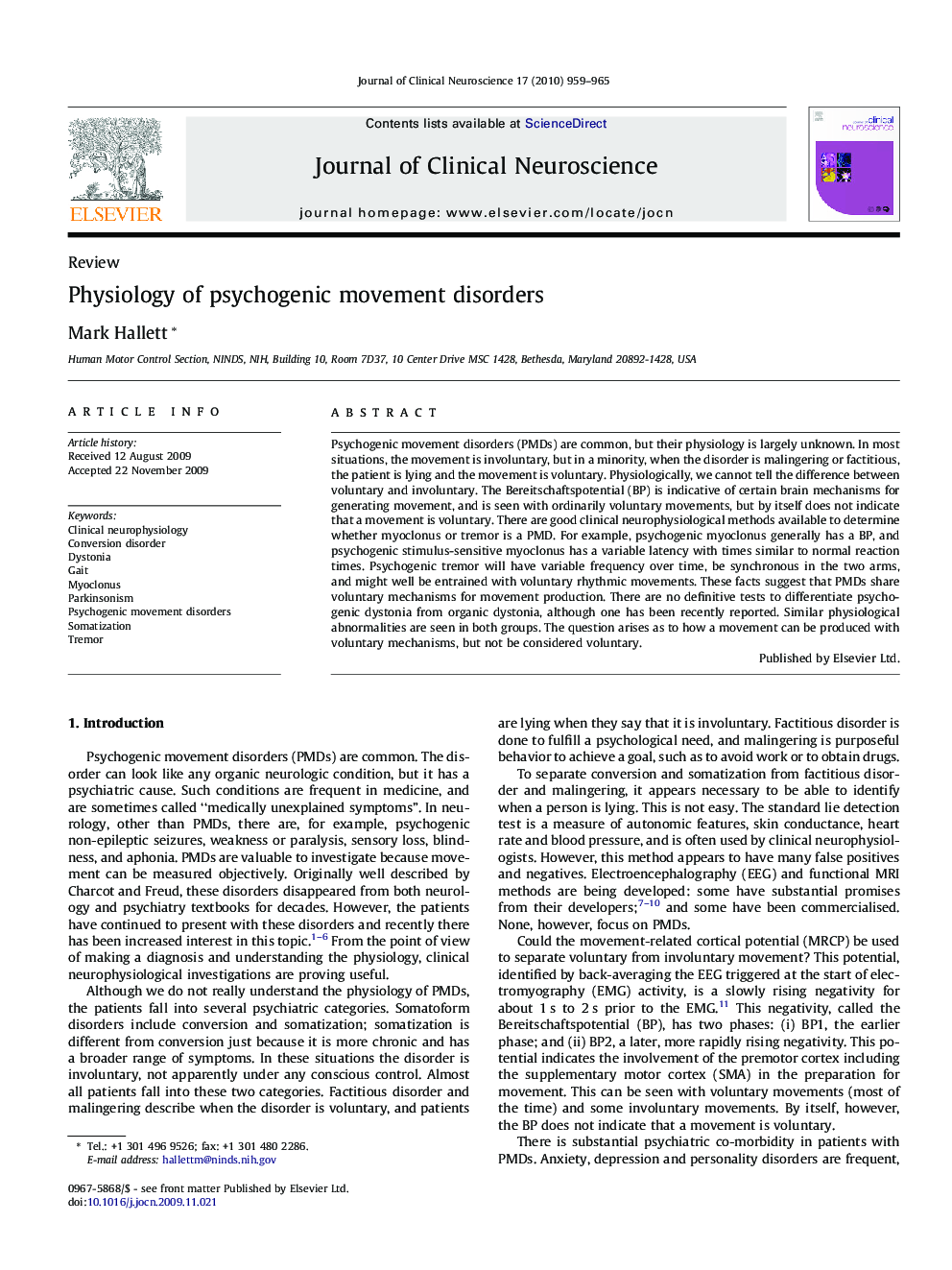| کد مقاله | کد نشریه | سال انتشار | مقاله انگلیسی | نسخه تمام متن |
|---|---|---|---|---|
| 3061053 | 1187463 | 2010 | 7 صفحه PDF | دانلود رایگان |

Psychogenic movement disorders (PMDs) are common, but their physiology is largely unknown. In most situations, the movement is involuntary, but in a minority, when the disorder is malingering or factitious, the patient is lying and the movement is voluntary. Physiologically, we cannot tell the difference between voluntary and involuntary. The Bereitschaftspotential (BP) is indicative of certain brain mechanisms for generating movement, and is seen with ordinarily voluntary movements, but by itself does not indicate that a movement is voluntary. There are good clinical neurophysiological methods available to determine whether myoclonus or tremor is a PMD. For example, psychogenic myoclonus generally has a BP, and psychogenic stimulus-sensitive myoclonus has a variable latency with times similar to normal reaction times. Psychogenic tremor will have variable frequency over time, be synchronous in the two arms, and might well be entrained with voluntary rhythmic movements. These facts suggest that PMDs share voluntary mechanisms for movement production. There are no definitive tests to differentiate psychogenic dystonia from organic dystonia, although one has been recently reported. Similar physiological abnormalities are seen in both groups. The question arises as to how a movement can be produced with voluntary mechanisms, but not be considered voluntary.
Journal: Journal of Clinical Neuroscience - Volume 17, Issue 8, August 2010, Pages 959–965